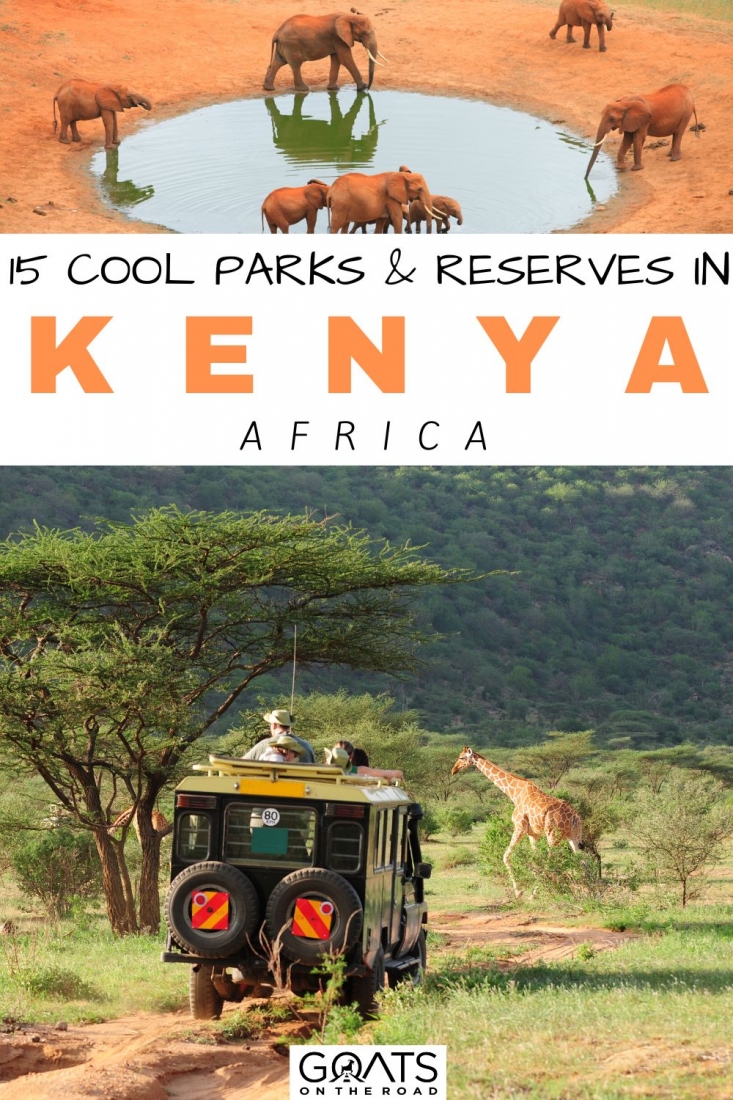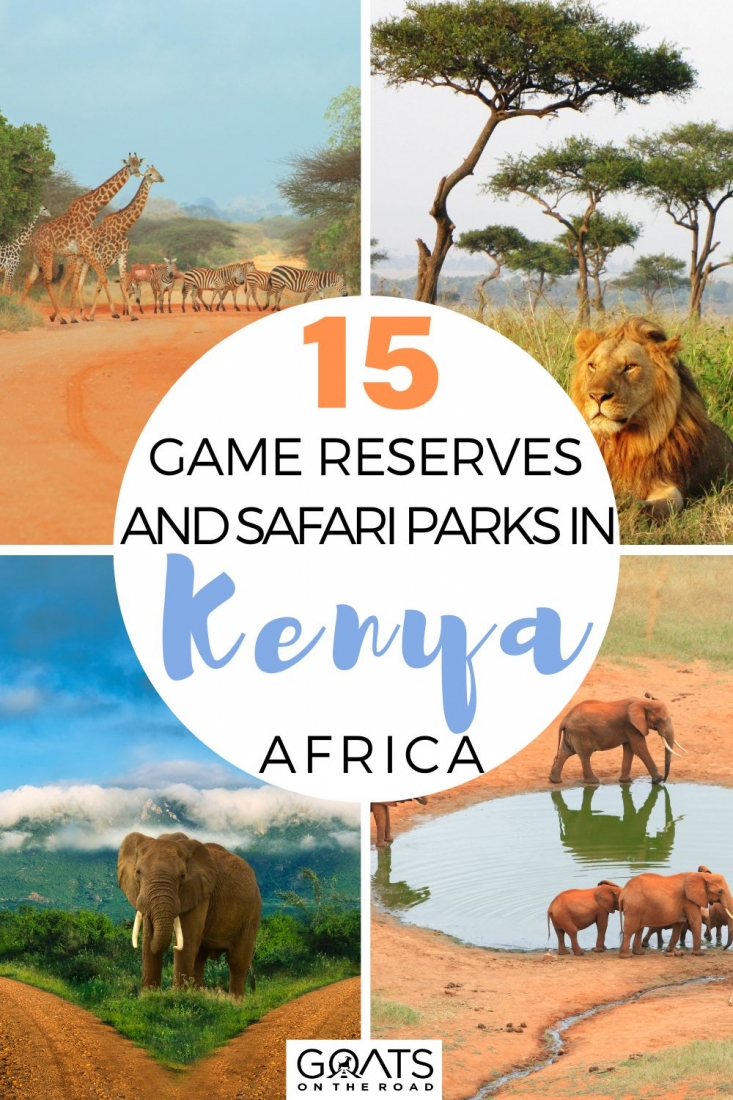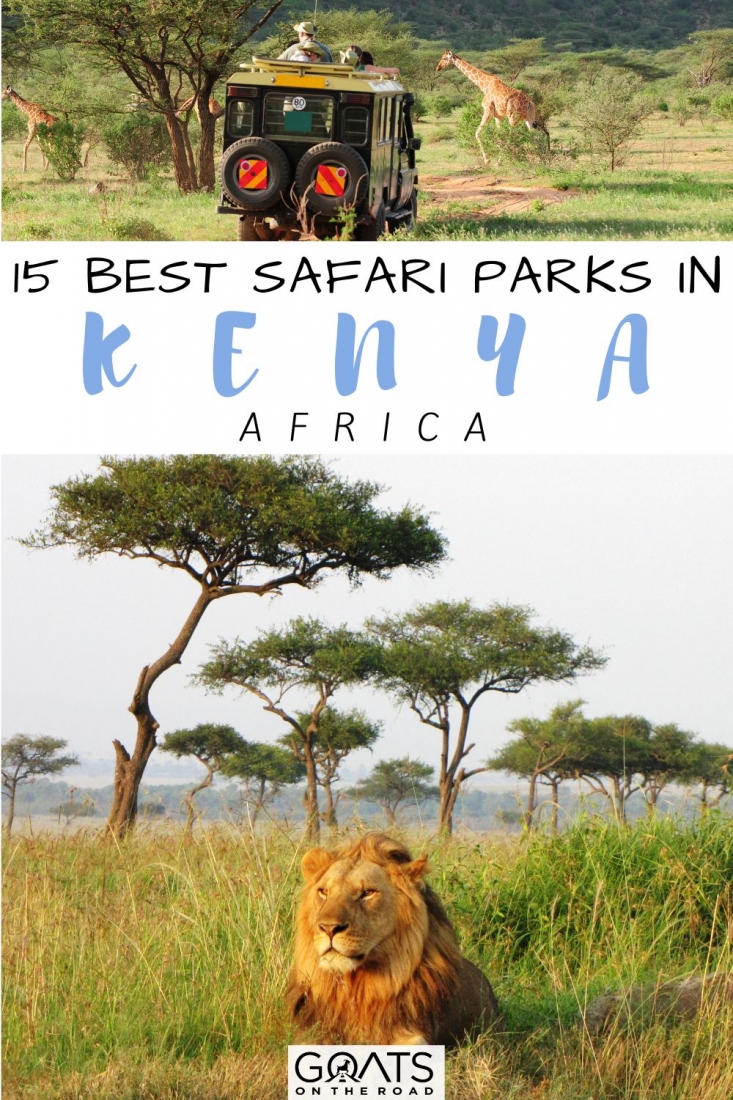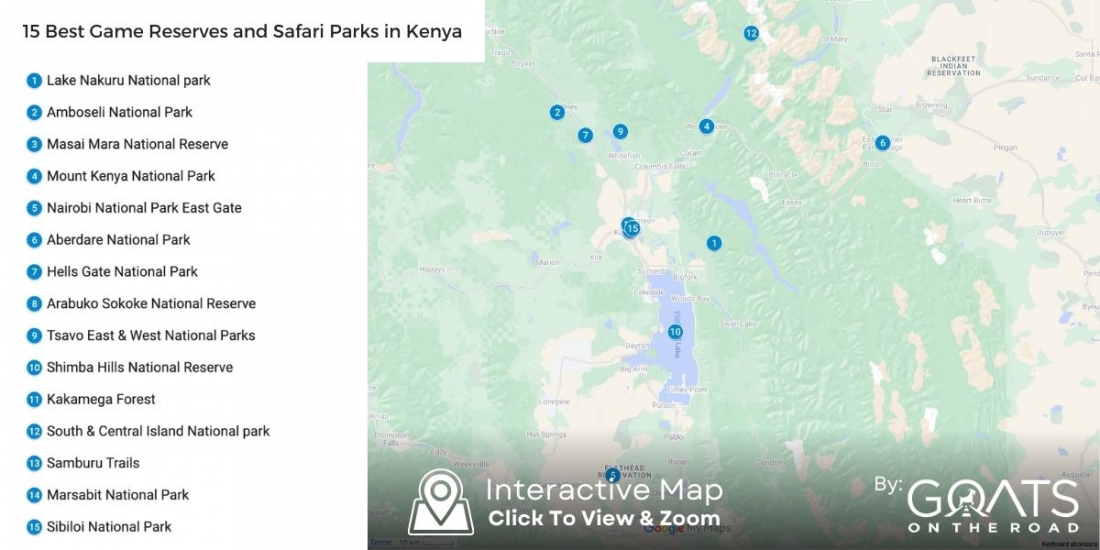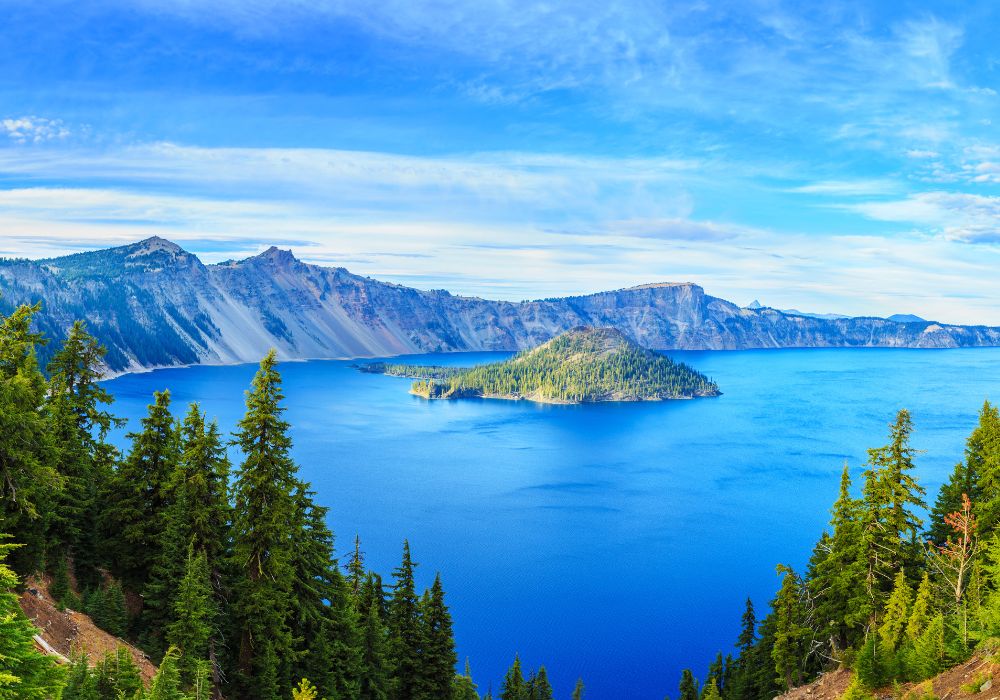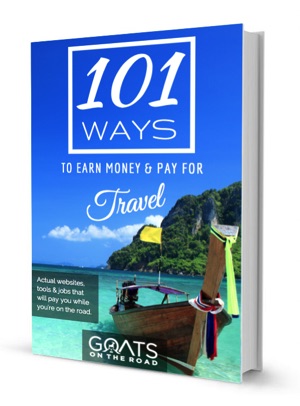When you think of the best safari destinations in the World, Kenya comes to mind immediately. Home to plenty of impressive places to discover some incredible wildlife, Kenya has over 50 game reserves and safari parks to explore.
To put it into perspective, about 8% of Kenya’s land is a protected area for wildlife conservation. This area is divided into four categories: national parks, game reserves, marine parks and reserves, and sanctuaries.
Table of Contents
- Here are The 15 Best Game Reserves in Kenya.
- 1. Lake Nakuru National Park, Nakuru City
- 2. Amboseli National Park, Kajiado County
- 3. Masai Mara National Reserve, Narok
- 4. Mount Kenya National Park, Central Kenya
- 5. Nairobi National Park, Nairobi
- 6. Aberdare National Park, Central Kenya
- 7. Hells Gate National Park, Naivasha
- 8. Arabuko Sokoke National Reserve, Watamu
- 9. Tsavo National Parks, Tsavo
- 10. Shimba Hills National Reserve, Kwale
- 11. Kakamega National Forest Reserve, Kakamega
- 12. South and Central Island National Parks, Lake Turkana
- 13. Samburu National Reserve, Isiolo
- 14. Marsabit National Reserve, Marsabit
- 15. Sibiloi National Park, Lake Turkana
- Best Safari Tours in Kenya
- Getting Around Kenya
- Quick Itineraries for Visiting the Top Parks in Kenya
- FAQs About Visiting the Game Reserves in Kenya
- Conclusion: Kenya Game Reserves and Parks
I’ve lived in Kenya for most of my life and visited more than half of the game reserves in the country. Each visit has been different, with new discoveries. I hope this article gives you an insight into what to expect.
So, if you want to experience the Great Migration, see herds of elephants, track the “big five”, or go bird watching, there’s a national park in Kenya for you.
Here are The 15 Best Game Reserves in Kenya.
If you’re looking for the perfect safari destination, here are the best national game reserves and wildlife parks in Kenya for a memorable safari experience.
1. Lake Nakuru National Park, Nakuru City
Located in Nakuru, the park is one of Kenya’s most popular safari parks. It was once famous for its millions of flamingos, however, conditions became unfavorable and these birds have since moved to other lakes along the Rift Valley.
The park’s wooded and bushy grasslands support different flora and fauna, and besides many species of mammals, it also hosts over 400 bird species.
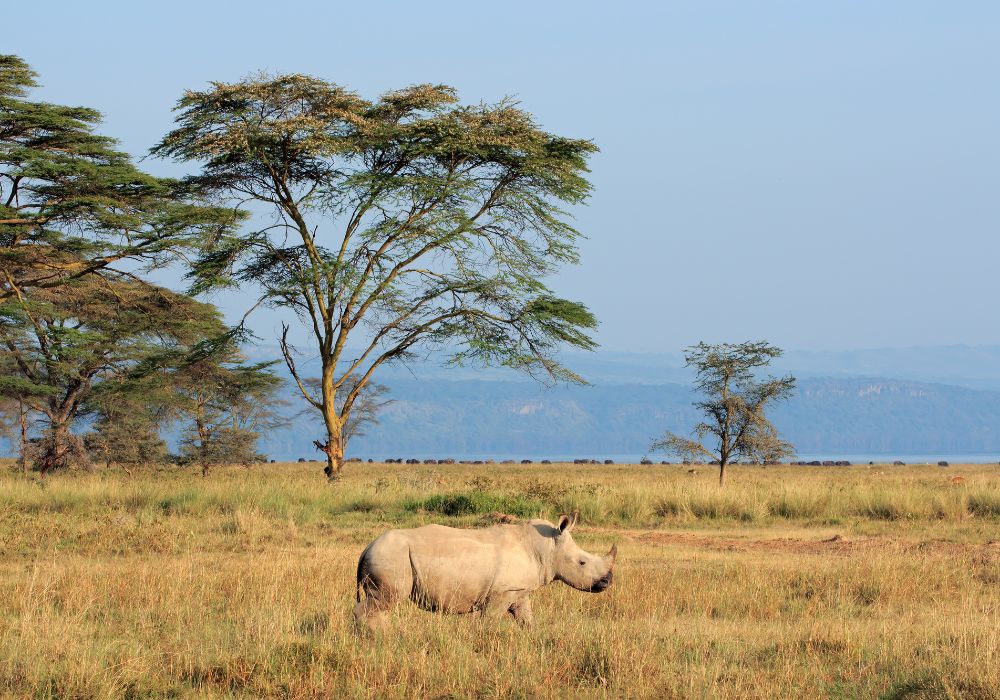
Visitors to this premium park can expect to see hippos, lions, leopards, white rhinos, rock hyrax, and grants gazelles. It also offers guests several physical features such as Bamboo Cliff, Makalia Falls, and Lion Hill.
Location: Lake Nakuru National Park is situated in Nakuru City, about 160 km northwest of Nairobi.
Getting There: From Nairobi, take the A104 road. The main gate (Lanet Gate) is 4 km south of Nakuru city center. A better alternative is joining a guided game drive.
Things To Do: Activities in the park include bird watching, camping, and taking in the views of the lake from Baboon Cliff, Lion Hill, and Out of Africa Hill.
Entrance Fee: Lake Nakuru National Park entry fees for non-residents are $70 (adults) and $20 (children and students). East Africans and residents pay Ksh 800 (adults) and Ksh 215 (children).
Where to Stay: Visitors to Lake Nakuru stay at Sarova Lion Hill Lodge. There are also many other accommodation options in Nakuru city.
2. Amboseli National Park, Kajiado County
Amboseli is one of the best game parks to visit in Kenya. The ecosystem is mainly savannah grasslands spread across the Kenya-Tanzania border.
The park is famous for being the best destination in Africa to get close to herds of free-ranging elephants, hippos, and the big five, among other wildlife species such as pelicans. Various water birds (like the Egyptian goose) are also visible in the swamps throughout the park.
There’s also a magical view of Mount Kilimanjaro, the World’s highest free-standing mountain from here.
Location: Amboseli National Park is Located in Oloitoktok, Kajiado County.
Getting There: Amboseli is accessed by road from Namanga (west side) using the Meshanani Gate. You can also enter from Emali (east side) using Erimito Gate or Kimana Gate (from Mombasa or Tsavo West). However, some visitors opt to join a tour or to fly into the Amboseli airstrip and enter via the Empusel Gate.
Things To Do: My favorite activities in the Amboseli are bird watching, camping, and game viewing.
Entrance Fee: The latest entry fees to Amboseli for non-residents are $70 for adults and $20 for children. Kenya citizens and residents pay Ksh 800 and Ksh 215 for children.
Where to Stay: Amboseli Serena Lodge is the best place to stay while in the park. However, there are other lovely cottages, campsites, and lodges like the Chui Cottages and Oltukai Lodge.
3. Masai Mara National Reserve, Narok
When I think of the best game reserves in Kenya, Masai Mara comes to mind immediately, and that’s because of its uniqueness. This particular national park is famous for the Great Migration and its luxury tented camps.
It boasts unique biodiversity that mainly comprises open grasslands; providing you with one of the best wildlife safari experiences. Visitors flock to the Mara for the annual wildebeest migration – nowhere else in Africa is wildlife more abundant.
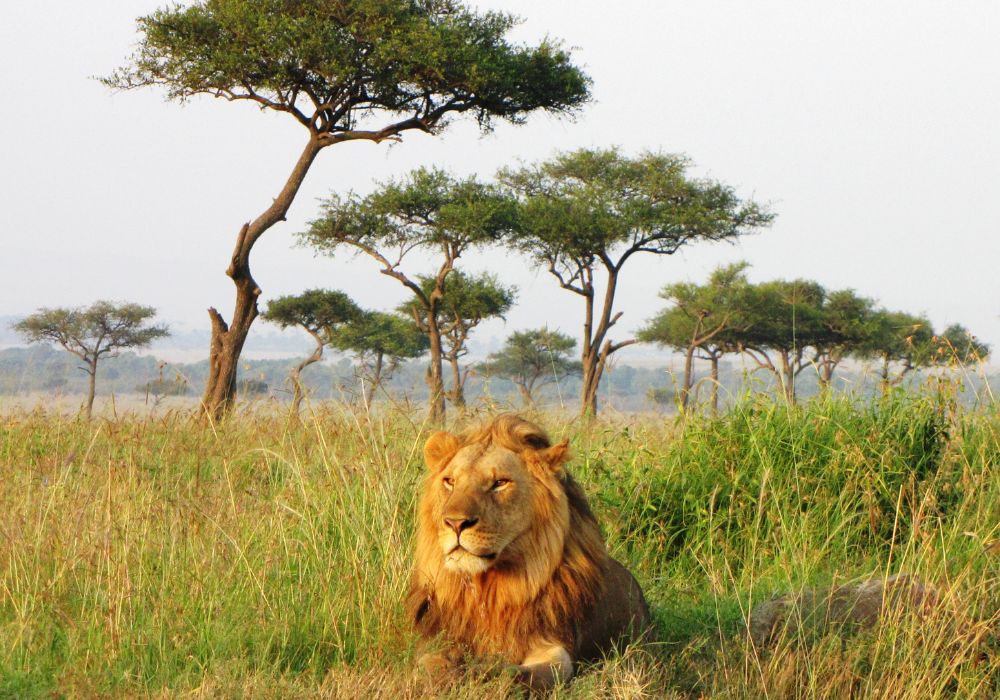
Besides game drives, the highlight of any Masai Mara Game Reserve trip is visiting a Masai Village, which gives an exceptional cultural experience.
With the opportunity to see the big five and spot different bird species, it’s not hard to see why Masai Mara qualifies as one of the best game reserves in Kenya.
Location: Masai Mara is situated in Narok, about 247 km southwest of Nairobi.
Getting There: Masai Mara is reached from Nairobi using the Mai Mahiu-Narok road. However, the best way to experience this park is to join a safari or fly to one of the three airstrips – Keekorok, Olkiombo, or Musiara. See this highly-rated safari tour to the Masai Mara.
Things To Do: The reserve is famous for the wildebeest migration that takes place from July to October. It’s also an excellent destination for bird watching, hot air balloon safaris, and nature walks.
Entrance Fee: Masai Mara National Reserve entry fee is US$ 80 per adult (24 hrs). Visitors staying on a camp within the national reserve boundaries pay US$ 70. Contact your tour operator for the latest rates.
Where to Stay: Masai Mara covers a relatively large area with many accommodation options, however, some of the best safari camps include the Talek Bush Camp and the exceptional Mahari Mzuri.
4. Mount Kenya National Park, Central Kenya
Mount Kenya National Park is a UNESCO Heritage Site. Its rugged glacier-clad summits, diverse forest, and alpine moorland make it one of Africa’s most impressive landscapes.
The ecosystem is a sight to behold. It comprises pristine wilderness, beautiful glaciers and peaks, magical lakes and tarns, lush forests, and mineral springs – it’s truly spectacular.
I’ve visited the park several times, with every visit unique. Going up the mountain is rewarding, too, as everything between the gate and the summit is beautiful.
Visitors can expect to see elephants, white-tailed mongoose, duiker, elands, and even leopards on rare occasions. The park also has over 120 recorded bird species so is a real delight for birders. Learn more about climbing Mount Kenya in this article.
Location: The park is about 176KM from Nairobi, along the Great North road.
Getting There: The park can be accessed using the Sirimon Gate (Nanyuki-Isiolo road) or Chogoria Gate (Embu-Meru road). However, the most common gate is Narumoru along the Nyeri-Nanyuki road. Nanyuki is the closest commercial airstrip.
Things To Do: Mount Kenya National Park is famous for mountain climbing, cave exploration, and camping. It’s also home to numerous wildlife and bird species.
Entrance Fee: Park entry fees to Mt. Kenya differ depending on the number of days spent there. Rates for day trippers are Ksh 430 for residents and citizens. Non-resident adults pay $52, while children and students pay $20.
Where to Stay: The best accommodation options are campsites and bandas (budget accommodation facilities resembling traditional African thatched-roof huts) inside the park. Options include Sirimon bandas, Batian Guesthouse, and Mackinders campsite. You can also stay at this beautiful glamping option if your budget allows it.
5. Nairobi National Park, Nairobi
Whilst it might not be as world-famous as the Masai Mara, this safari park is another fantastic place for spotting the spectacular Kenyan wildlife. Nairobi National Park is located near the capital center – an ideal safari destination if you’re short on time.
The park is an essential sanctuary for breeding and restocking rhinos to other parks. It also hosts the famous Nairobi safari walk and animal orphanage.
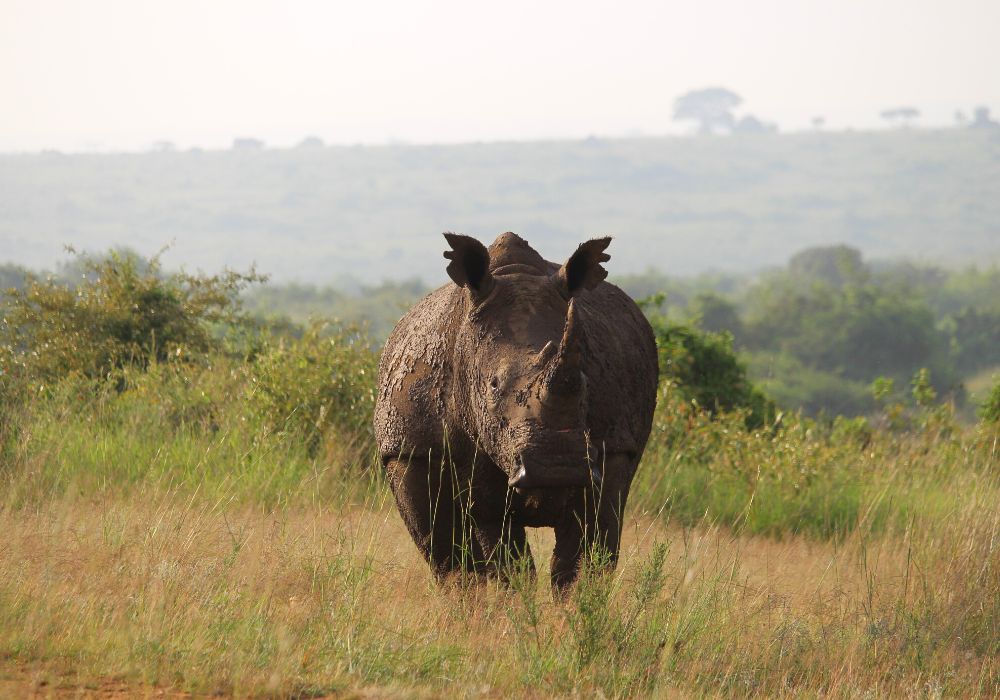
Most visitors on safari to Kenya start their trip here for a reason. The park is easily accessible and offers the unique sights of wildlife with skyscrapers in the background.
If you have a long layover in Nairobi, hop into the Nairobi National Park for an experience of a lifetime.
Location: The Nairobi National Park lies less than 20 minutes from the city center.
Getting There: The best way to access the game park is by hiring an open-roof van or by joining a tour. There are also matatus and taxis from anywhere in the city. This highly-rated tour is a great option.
Things To Do: Activities in the park include game viewing, visiting the ivory burning site, camping, and picnicking.
Entrance Fee: The latest park entry fees for non-residents are $60 (for adults) and $20 for children. Kenyans and residents pay Ksh 500.
Where to Stay: There are plenty of accommodation options in Nairobi. You’ll find hostels, guesthouses, apartments and elegant hotels.
6. Aberdare National Park, Central Kenya
As an avid hiker, I’ve been to this national park countless times and can highly recommend it. It’s a good sample of what nature has to offer in Kenya.
The Aberdare National Park hosts one of Kenya’s most valuable natural resources – the Aberdare Forest. The forest is a hiker’s paradise with over 11 marked trails and several spectacular waterfalls. The latter includes Karuru falls, which are the tallest in Kenya.
Aberdare National Park is also a wildlife and bird haven. Animals spotted in the park include the Columbus monkey, sykes monkey, leopards, black rhino, and elephants. If you’re lucky, there are also occasional sightings of lions, wild dogs, and the elusive bongo here.
Besides hiking trails and wildlife, the park is best known for the Tree Tops Hotel, which is where the late Queen Elizabeth learned of her accession to the throne in 1952.
Location: The park is in Central Kenya in the higher areas of the Aberdares mountain ranges.
Getting There: The Aberdare National Park is accessed by self-driving or by joining a hiking tour. The main towns to drive to are Njabini, Mweiga, Shamata, and Nyahururu.
Things To Do: Visitors to Aberdares can indulge in hiking, camping, chasing waterfalls, trout fishing, and bird watching.
Entrance Fee: Aberdares National Park fees for adults are Ksh 1200 (residents), Ksh 500 (citizens), and $60 for non-residents. Children pay half the price.
Where to Stay: The best hotels and lodges in the Aberdares are Tree Tops Hotel, The Ark Limited, and Aberdare Country club. There are also several campsites to choose from like Reedbuck, Wandare, and Fishing Lodge.
7. Hells Gate National Park, Naivasha
If I was to recommend only one safari park on this list, it would be Hells Gate National Park. I lived near the park for about three months and went there for a bike ride almost every weekend.
Hells Gate National Park covers an area of 68.25 km². It may be smaller than other parks in Kenya, but there’s nothing comparable to cycling past zebras, giraffes, and buffalos.
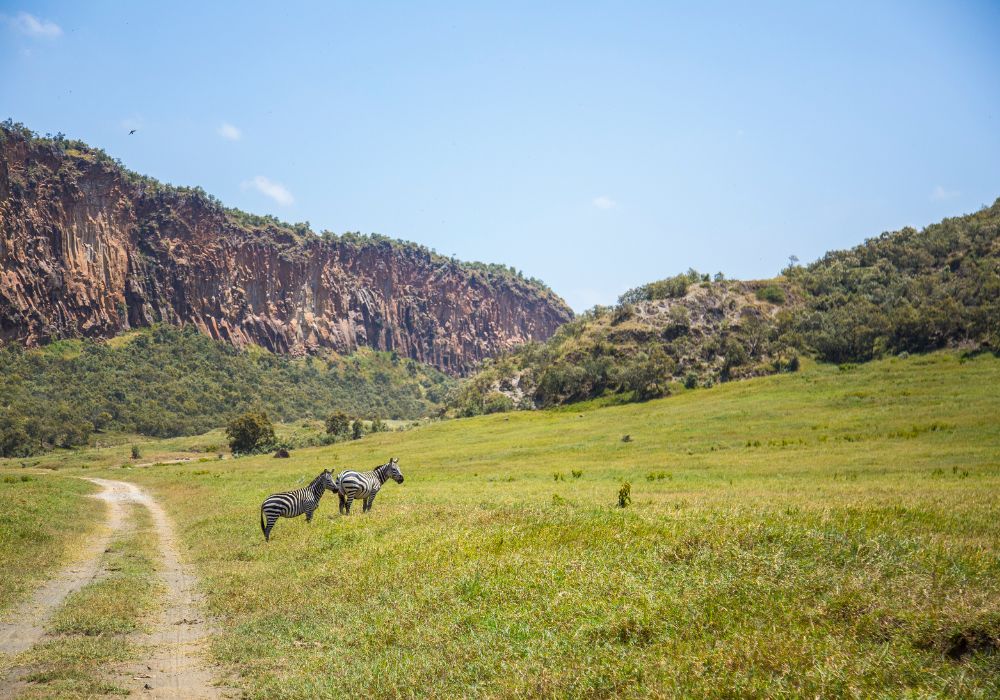
It’s one of the few national parks in Kenya where cycling, walking, and horseback riding are permitted. Visitors can bring their bikes or hire them at the gate, and ride in the park watching wildlife and enjoying the varying landscapes.
The park is characterized by diverse scenery and has something for every traveler. It’s home to countless wildlife kinds, birds, and features such as geysers, gorges, and rock formations.
While in the park, you can’t miss Fischer’s Tower, (a volcanic plug with a height of approximately 25 meters), and Pride Rock which was the inspiration for The Lion King. You can also go swimming at the Olkaria Geothermal Spa or visit a Maasai village.
Hell’s Gate has two gates – the main Elsa Gate and the Olkaria Gate.
Location: Hell’s Gate National Park is situated along the South Lake Road, about 90 km from Nairobi.
Getting There: The park is accessed by road from Nairobi. Visitors can use the Nairobi-Mai Mahiu or the Nairobi-Naivasha highway. Hire bikes at either gate to explore the wilderness on two wheels.
Things To Do: Hell’s Gate is the perfect place for hiking, cycling in the wild, camping, rock climbing, and bird watching. Physical features in the park include cliffs, gorges, and hot springs.
Entrance Fee: The latest park entry fees for non-residents are $30 (adults) and $20 (children). Kenyans and residents adults pay Ksh 300 and Ksh 215 for children.
Where to Stay: There are many options for places to stay in Naivasha. The park also has several campsites like the Olduvai and Nairburta.
8. Arabuko Sokoke National Reserve, Watamu
Whenever I travel to the north coast of Kenya, I always make sure to stop in and explore this off-the-beaten-path national reserve.
Arabuko Sokoke National Reserve in Watamu is the most significant stretch of tropical forest along the East African coast. It’s also famous for being home to more than 600 bird species.
The park protects a diverse habitat rich with fauna and flora, including wildlife, butterflies, birds, reptiles, and amphibians.
Here you’ll find the small and beautiful golden-rumped elephant shrew and other rare birds like Clarke’s Weaver, Sokoke scops owl, and Sokoke pipit.
There are also many attractions near the park, such as Gede Ruins, Watamu Beach, Mida Creek, and Watamu Marine National Park.
Location: The Arabuko Sokoke National Reserve is located in Watamu, about 110KM from Mombasa City.
Getting There: The reserve can be reached from the Mombasa–Malindi road and there are also flights to the nearby Malindi Airport.
Things To Do: Some of the top things to do in Arabuko Sokoke include hiking, bird watching, and tracking the golden-rumped elephant shrew.
Entrance Fee: The entrance fees are: Ksh 600 for non-resident adults, Ksh 400 for residents, and Ksh 200 for Kenyan citizens. Children and students pay less than Ksh 50 – Ksh 200.
Where to Stay: Arabuko Sokoke Game Reserve may not have many accommodation options, but you’re sure to enjoy staying at Medina Palms or this beautiful boutique hotel in Watamu.
9. Tsavo National Parks, Tsavo
Tsavo East and Tsavo West game parks dominate the southern circuit and form the largest game park in Kenya. The two parks are close to the Indian Ocean offering visitors a chance to view wildlife while staying at the coast.
Both parks are famous for their large herds of elephants, buffalos, and other wildlife. They also have a prolific bird life featuring over 500 species.

Due to its attractive scenic features, Tsavo East National Park is my favorite park in Kenya. It has a rich history and striking landscapes like the Lugard Falls and Mudanda rock formations. The confluence of the Tsavo and Athi rivers to form the Galana River is also an exciting sight.
Tsavo West is magical – enjoy its beautiful ecosystem comprising scrublands, open grasslands, rocky ridges, and acacia woodlands.
Wildlife in the parks includes leopards, cheetahs, giraffes, zebras, and lions.
Location: Tsavo East and Tsavo West are about 232 km south of Nairobi. They are reached using Mtito Andei, Sala, Tsavo, and Chyulu Gates.
Getting There: The best way to get into the parks is by joining a safari. However, visitors can alternatively access the parks by road or rail using Mtito Andei Gate. There are also flights to Voi, Aruba, Satao, Maktau, and Tsavo Gate.
Things To Do: Activities in the Tsavo National Parks include game viewing, bird watching, camping, and seeing attractions such as Lugard Falls, Mzima Springs, and Mudanda rock formations.
Entrance Fee: Citizens and residents pay Ksh 500 (adults) and Ksh 215 (children and students). The entry fees for non-residents are $60 for adults and $20 for children.
Where to Stay: There are many tented camps in Tsavo West National Park. Visitors to Tsavo East can stay at Voi Wildlife Lodge or one of the park’s campsites.
10. Shimba Hills National Reserve, Kwale
The coastal circuit has a series of highly protected marine parks. They stretch the entire length of the Kenyan coast and offer a true sense of paradise to marine life lovers.
The region also contains several game reserves and parks. One such reserve is the Shamba Hills, located close to Diani Beach on the south coast.
Shimba Hills National Reserve comprises a heterogeneous habitat including forestlands, scrublands, grasslands, and giant primeval trees. It holds one of the most extensive coastal forests in East Africa, Mwalunje, after the Arabuko Sokoke forest.
Visitors can also expect to see animals such as African elephants, giraffes, buffalos, bushbuck, the rare sable antelope, duikers, and many bird species.
I particularly enjoy visiting the reserve to chase the Sheldrick waterfalls. These spectacular falls are laced with greenery and a natural pool – a rare sight in the region.
Location: The reserve is 3 km from Kwale town, south of Mombasa City.
Getting There: The reserve’s primary access is by road via Diani, about 56 km from Mombasa. Visitors can also fly to the nearby Diani Airport from Nairobi.
Things To Do: Visitors at Shimba Hills can go for nature walks, game viewing, chase waterfalls, and enjoy bird watching.
Entrance Fee: Shimba Hills Reserve entry fees for non-residents are $15 (children) and $25 (adults). Kenyans, residents and East Africans pay Ksh 215 (children) and Ksh 300 (adults).
Where to Stay: One of the best places to stay in the national reserve is the Shimba Hills Lodge.
11. Kakamega National Forest Reserve, Kakamega
Western Kenya is one of the country’s least visited regions, but it has hidden gems for those who enjoy going off the regular tourist trail. One such place is the Kakamega Forest – one of the best game reserves in Kenya.
The reserve offers a unique wildlife experience matched with scenic beauty. It’s home to rare animal species like the potto, and the endangered deBrazza’s monkey.

Visitors can also expect to see Columbus monkeys, tree pangolins, and bush pigs in this rich rainforest.
There’s no better place to visit in Kenya for birds and butterfly watchers. The forest provides a habitat for over 350 species of birds and 400 species of butterflies.
If you plan to visit the forest reserve, consider a trip to the Kisumu Impala Sanctuary and Ndere Island National Reserve. They offer an opportunity to experience wildlife and nature while in Western Kenya.
Location: The reserve is located in Kakamega, about 400 km from Nairobi and 50 km from Kisumu.
Getting There: The easiest way to reach this reserve is by flight to Kisumu Airport or Kakamega Airstrip. Visitors can also travel by road from Nairobi.
Things To Do: Activities in Kamamega Forest include game viewing, bird and butterfly watching, camping, nature walks, and picnicking.
Entrance Fee: The entrance fees for Kenyan citizens and residents are Ksh 300 (adults) and Ksh 215 (children). Non-residents pay $25 for adults and $15 for children and students.
Where to Stay: Accommodation in this reserve is limited and perhaps less luxurious than elsewhere in Kenya, however, there are lodges and hotels in Kakamega.
12. South and Central Island National Parks, Lake Turkana
These remote parks, together with Sibiloi National Park, form Lake Turkana National Park – a UNESCO World Heritage Site.
The South Island national park offers visitors stunning scenery and excellent bird-watching opportunities. It’s home to hippos, Nile crocodiles, and several species of venomous snakes.
Although relatively difficult to reach, Central Island National Park is charming. This small active volcano park comprises three scenic crater lakes; Flamingo, Crocodile, and Tilapia. It’s also believed to support the world’s largest population of Nile crocodiles.
If you want to explore parts of Kenya not many people have, visit Lake Turkana National Parks. They are scenic, magical, and rich in diverse ecosystems.
Location: This 5 Km² park is located inside Lake Turkana National Park.
Getting There: The park is accessed by road from Nairobi via Lodwar (western side) or Loiyangalani (eastern side). You can also fly to Lodwar airport, Sibiloi airstrip, or Loiyangalani. From there, take a short boat ride to the park.
Things To Do: Visitors to the park can view crocodiles, take a boat ride, camp, or visit the El-Molo people.
Entrance Fee: Kenyan citizens and residents pay Ksh 300 (adults) and Ksh 215 (children) to enter. Entry fees for non-residents are $25 (adults) and $15 (children and students).
Where to Stay: Accommodation facilities near the parks include Oasis Lodge, Lobolo Tented Camp, and the Allia Bay Guesthouse.
13. Samburu National Reserve, Isiolo
A short trip from Nairobi, yet a world apart in every other respect, is the less-visited Samburu National Reserve. I visited this park while on a road trip to Marsabit and enjoyed its landscapes and wildlife.
Along with Shaba and Buffalo Springs, Samburu forms an ecosystem separated only by the Ewaso Nyiro River.

Together they provide an opportunity to view five rare wildlife species found almost nowhere else in Kenya: the Beisa oryx, gerenuk, Grevy’s zebra, reticulated giraffe, and the Somali ostrich.
This national reserve is a delight to those prepared to venture off the beaten path. It’s a jewel in the north and a must-visit to wilderness and wildlife lovers.
Location: Samburu National Reserve‘s main gate (Archer’s Gate) is about 345 km from Nairobi.
Getting There: The reserve is reached by road from Nairobi through Nanyuki and Isiolo. It can also be accessed by flying into the Oryx Samburu airstrip.
Things To Do: Activities in Samburu National Reserve include game drives, nature walks, bird watching, sundowners, and Samburu cultural experience.
Entrance Fee: The park entry fees to Samburu National Reserve for non-residents are $70 (adults) and $40 (children).
Where to Stay: Samburu Game Reserve has some of Kenya’s best safari lodges and campsites. Some of them include Samburu Intrepids, Samburu Sopa, and the Grevy Campsite.
14. Marsabit National Reserve, Marsabit
The Marsabit National Reserve is situated near the town of Marsabit in Northern Kenya. The park is made up of densely forested mountains and three crater lakes, including the magical Lake Paradise which is the perfect habitat for various birdlife.
Although less visited than other game parks, Marsabit National Park is a great safari destination. It’s home to herds of the African bull elephants, the endangered Grevy’s zebra, hyenas, reticulated giraffes, grant’s gazelles, lions, leopards, and other wildlife species.
The park is more famous for Ahmed, the legendary elephant who in the 70s was offered 24hr security surveillance by presidential decree – a sign of Kenya’s commitment to wildlife conservation.
A visit to this park is also an opportunity for a road trip along the Great North road and to engage with local communities.
Location: The Marsabit National Park and Reserve are close to Marsabit town, about 8 hours from Nairobi.
Getting There: From Nairobi, the park is reached by road via Nanyuki and Isiolo. Visitors can also fly into Marsabit airport, which is only about 4 km from the main game.
Things To Do: The top attractions in this national park include game viewing, bird watching, hiking, and visiting Lake paradise.
Entrance Fee: The entrance fees for non-residents are $25 (adults) and $15 (children and students). Kenyan citizens and residents pay Ksh 300 (adults) and Ksh 215 (children).
Where to Stay: Visitors to Marsabit National Park can stay at the nearby Sand and Rock Resort or campsites inside the park (Ahmed and Abdul). There’s also a special camp on the shores of the magnificent Lake Paradise.
15. Sibiloi National Park, Lake Turkana
Sibiloi is another great national park in Nothern Kenya. It lies on the eastern shore of Lake Turkana, about 800 km from Nairobi.
Besides having stunningly beautiful wildlife zones, the park is home to some of the most important archeological sites in the world.

The semi-desert park was established to protect wildlife species and prehistoric sites like Koobi Fora, some of which are linked to the origin of man.
Although the alkaline waters of Lake Turkana feed it, Sibiloi harbors a variety of wildlife, including Grant’s gazelle, topi, hippos, cheetahs, crocodiles, and many bird species.
Sibiloi is one of the few game reserves in Kenya offering an opportunity to get off the beaten path. It’s also a chance to go on safari and experience human history.
Location: Sibiloi National Park is located in the northern parts of Kenya, close to the Ethiopian border.
Getting There: The park can be reached by road from Nairobi via Marsabit and North Horr or Mararal and South Horr. An alternative route is to travel to Kalokol, on Lake Turkana’s western side, and then take a boat ride to the park.
Things To Do: Activities in the park include archeological safaris, bird watching, camping, and game viewing.
Entrance Fee: Park entry fees for non-residents are $25 for adults and $15 for children. East Africans and residents pay Ksh 300 (adults) and Ksh 215 (children).
Where to Stay: Visitors to the park can stay at the Old Kokai Camp, Lobolo Tented Camp, or the Alia Bay Guest House.
Best Safari Tours in Kenya
While you can opt for self-drive trips through some of the game reserves in Kenya, an easier way to visit the parks is to join a safari trip with a professional guide or tour company. Below is a list of some highly rated safari tours in Kenya.
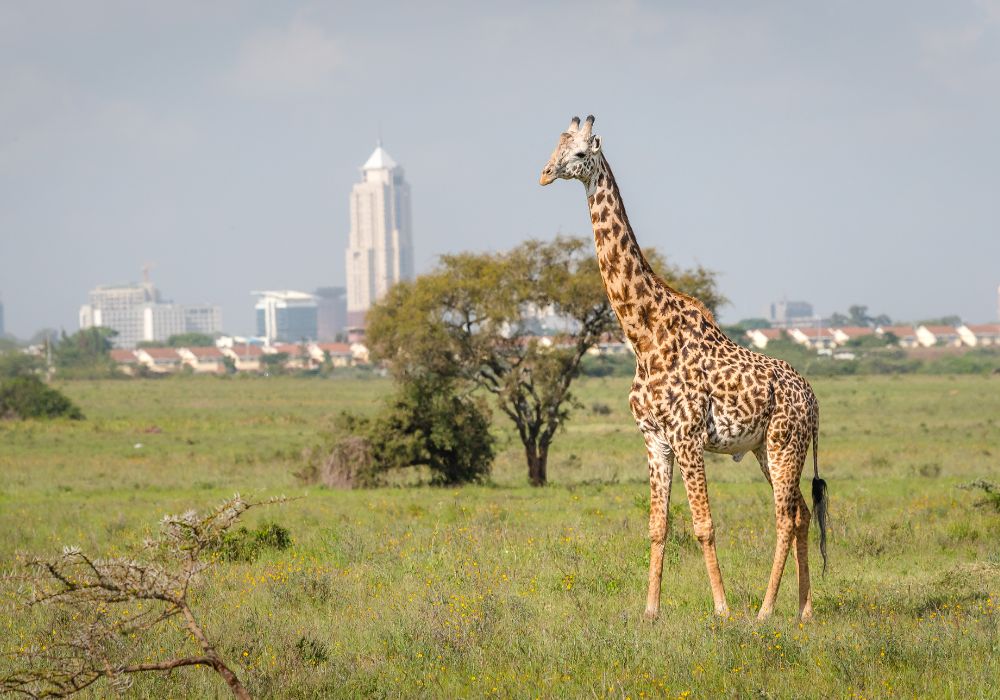
1. Nairobi National Park Safari Tour
A short 7 km drive takes you away from the hustle and bustle of Nairobi city to the open savannah plains, where lions laze around, giraffes gracefully roam, and antelopes cautiously graze nearby. In the background, the tall buildings of Kenya’s capital create a unique background for a photo.
The Nairobi National Park Tour allows you to experience the magic of what goes on in the wild with a local guide. It’s ideal for a day trip and offers an exciting and relaxing escape to nature, away from the busy capital city.
2. Lake Naivasha and Hell’s Gate Park Day Tour
Hells Gate National Park Day Trip is a fun way to enjoy viewing wildlife and birdwatching while riding a bike or walking. Visitors can also expect breathtaking landscapes and amazing features, including deep gorges, cliffs, rock towers, geysers, and hot springs.
After Hell’s Gate, travelers are driven to Lake Naivasha for a delicious lunch and a boat ride over the lake. Here you can meet locals, see giant hippos, and watch different bird species like the African fish eagle.
3. Nairobi City Wildlife Experience
Nairobi is the starting point for many travelers on Kenyan wildlife safaris. It gives them a sneak peek of what to expect in the vast wilderness and grasslands of Amboseli, Masai Mara, and Tsavo parks.
The Nairobi Wildlife Experience is a tour of wildlife spots in the city with a local guide. You’ll have the opportunity of visiting Nairobi National Park, the Giraffe Center, and the David Sheldrick Elephant Sanctuary. What’s unique about this tour is the services of a private guide/driver and their knowledge shared on the wildlife in Kenya.
4. Masai Mara Safari Experience
Visiting Masai Mara is every traveler’s dream. The game reserve is spectacular and allows visitors to enjoy the incredible Kenyan landscapes and wildlife. The wildebeest migration between July and October is a once-in-a-lifetime sight to witness and one you’ll surely remember long after you leave.
A 3-day Masai Mara Safari is one of the best adventures in Kenya. It’s a chance to spot the big five and other animals and make lasting memories. Guides/drivers on this tour know the reserve inside out and will take you through the best routes and viewing points.
5. Bushwalk with Maasai Warriors
Meeting the Maasai people is on many travelers’ bucket lists after seeing photos of Morans jumping high up in the air. This tour allows you to immerse yourself in the authentic Maasai culture guided by local Maasai warriors.
The tour involves visiting a Maasai village and learning about the people’s way of life. You’ll learn how to make fire the old way, dance to traditional songs, jump high up, and take nature walks. You can also spend the night in the village with a Maasai family and taste their food.
6. Nairobi Storytelling Tour
There’s no better way to experience Nairobi than through the eyes of youths who raised themselves on the city’s streets. They know every corner of Kenya’s capital, and their knowledge of the city streets and attractions is inspiring.
Nai Nami (Nairobi with me) tour is one of the best tours in Kenya. This storytelling experience involves visiting markets, restaurants, bus stations, and historical sites within Nairobi. Besides offering travelers a chance to explore the city on foot, it’s a source of income for the youths (former street families).
Getting Around Kenya
Here are the best ways to get around when visiting the parks in Kenya.

By Plane
Flying around Kenya (especially to the parks) is the best option as it saves time and allows you to experience more places. Several domestic airlines and charter services operate flights to main towns and cities, coastal destinations, and game reserves in Kenya.
The leading operators include Jambojet, Tropic Air, Fly 540, Airkenya, and SafariLink.
By Trains
Kenya Railways operates three daily trains (8 am, 3 pm, and 10 pm) connecting Nairobi and Mombasa. The trains are faster, cheaper, more comfortable, and safer compared to buses.
A first-class seat on the train costs $30, while a second-class ticket goes for $10. Three more railway lines in Kenya connect Nairobi to Suswa, Nanyuki, and Kisumu.
Renting a Vehicle
Renting a car gives you the freedom and convenience of traveling at your own pace. And with all the game reserves and parks in Kenya open to private vehicles, self-driving is a great option.
Tour / Private Driver
You can also hire a car with a driver or guide if you’re uncomfortable with Kenyan roads.
Hiring a vehicle with a private driver/guide is affordable and makes your Kenyan experience so much richer. It allows you to see the country like a local, with a local. Hiring a car and driver/guide costs about $100 per day.
On the other hand, most people traveling to Kenya book safaris in advance with travel agencies. An alternative is joining a tour organized by local individuals and groups. It’s a cheaper and better way to experience Kenya.
Long Distance Buses
There are many long-distance buses to almost all destinations outside Nairobi. The buses are comfortable and are (mostly) on time. Some companies like Ena Coach, Mash East Africa, and Buscar have online booking platforms to help you plan your trip. Bus journeys to Mombasa, Kisumu, and Malindi typically cost $10-$30.
Matatus and Taxis
Along most routes within towns and cities or to destinations close to Nairobi, matatus (minibusses) are the best option. They are affordable and give you a good insight into Kenyan culture and people’s way of life. Ride-sharing taxis like Uber are recommended for airport transfers.
Quick Itineraries for Visiting the Top Parks in Kenya
Here are a few simple itineraries to follow when visiting the game reserves in Kenya.
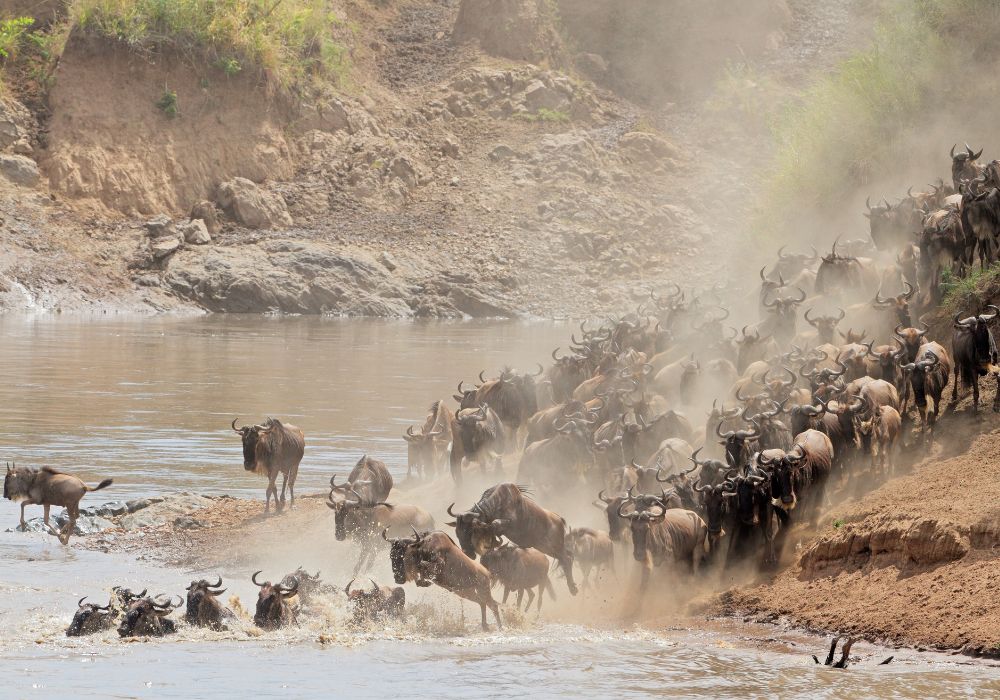
3 Days in Kenya
3 Days in Kenya is sufficient to taste what this magical destination offers.
Start your first day by exploring the capital, Nairobi. Go to Nairobi National Park for a game drive, and don’t forget to stop at The Elephant Sanctuary.
On the second day, take a day trip to Hells Gate National Park for an extraordinary experience. If you still have time, take a boat ride on Lake Naivasha.
Spend the third day in Kenya, viewing rhinos and other wildlife at Lake Nakuru National Park. Also, don’t forget to chase the Makalia waterfalls.
Drive back to Nairobi, go shopping at a Maasai market, and experience the city’s nightlife before you leave.
One Week in Kenya
There’s so much you can fit in if you’re staying for a week in Kenya. Most visitors start with wildlife safaris and finish with cultural experiences in Nairobi.
A typical one-week Kenya itinerary includes a 7-day safari to Masai Mara, Mt. Longonot, Lake Nakuru, and Amboseli.
An alternative would be a 7-day big five safari beginning from Nairobi National Park. Visitors then explore the southern circuit, which consists of Amboseli, Tsavo West, Tsavo East, and Mombasa City.
For adventure travelers, the central circuit is the most ideal. Explore the Aberdares and then test your legs on a 5-day trek on Mount Kenya.
Whichever circuit you choose, spend some time experiencing Kenya’s nightlife and sampling local dishes.
10+ Days in Kenya
With its thriving wildlife and magnificent beaches, Kenya has a lot to offer travelers looking for unique experiences. From exploring vast grasslands to relaxing at the coast, a 10-day Kenya itinerary provides plenty of exciting options.
Upon arrival in Nairobi, spend the first two days visiting wildlife attractions in the city. Besides the Nairobi National Park, you can go to The Giraffe Center and Elephant Nursery.
After getting acquitted with Kenyan safaris in Nairobi, head over to the South Rift Region; an ideal circuit for first-timers in Kenya. Visit Lake Nakuru National Park and transfer to the Masai Mara National Reserve. On your way back to Nairobi, stop in Naivasha and explore Hell’s Gate.
Spend your last few days in coastal Kenya. Start by visiting Shimba Hills National Reserve near Diani Beach and then travel north to the scenic Arabuko Sokoke Forest Reserve.
While at the coast, make sure you spend some time at Watamu Beach. It’s one of the best ways to finish your 10-day trip in Kenya.
FAQs About Visiting the Game Reserves in Kenya
Below are answers to some commonly asked questions about visiting the parks and reserves in Kenya.
There are over 50 game reserves in Kenya. These include 23 safari parks, 28 national reserves, and 6 marine national parks and reserves.
Due to its proximity to Nairobi and plentiful wildlife, Amboseli is the best national park to visit in Kenya for a day trip.
Kenya’s safari parks and game reserves charge an entry fee for conservation purposes. Their rates depend on the park’s category and visitors’ residence status. Contact Kenya Wildlife Service for the latest entry fees.
Covering a massive 4% of Kenya’s total area, Tsavo National Park (east and west) is the largest park in Kenya. However, at 13,747 Km², Tsavo East National Park is the biggest of the two.
Although Masai Mara National Reserve is Kenya’s most renowned safari park, each game park is unique.
Conclusion: Kenya Game Reserves and Parks
The quality of Kenya’s game parks and reserves makes it one of the best places in the world to visit for wildlife safaris. There are many reserves in the country, each beautiful with a unique offering.
I hope the list above of the best game reserves and safari parks in Kenya will inspire you to have a fantastic trip.
Like This Article? Pin it!
